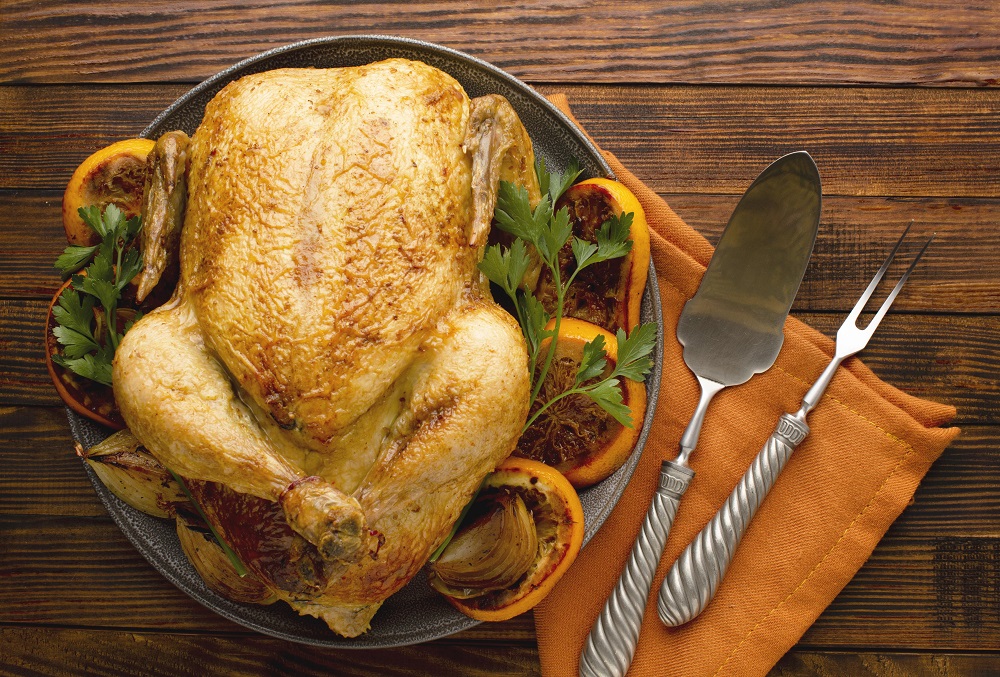Desi Style Chicken Curry – A Traditional Indian Comfort Dish with a Burst of Flavors
Desi Style Chicken Curry is one of the most loved dishes in Indian households, and when it is prepared in a truly desi style, it becomes an unforgettable experience for the taste buds. This classic recipe is packed with the earthy aroma of fresh spices, the richness of slow-cooked gravy, and the warmth that only traditional Indian cooking can offer. The desi style is unique because it uses age-old techniques, hand-ground spices, mustard oil, and sometimes even cooking in clay pots to enhance the flavor. It is not just food; it is a slice of Indian culture served on a plate. In India, Desi Style Chicken Curry is more than just a dish—it is part of celebrations, family gatherings, and even Sunday lunch rituals. From the small villages of Punjab to the coastal kitchens of Kerala, every region has its own twist on this humble yet majestic dish. The base, however, remains the same: tender chicken pieces simmered in a rich, spicy gravy that pairs beautifully with rice, roti, or naan. What makes the desi style different is the use of local ingredients and methods. For example, in northern India, mustard oil is the preferred cooking medium, giving the dish a pungent yet appetizing aroma. In the western parts, you might find the addition of coconut milk for a creamier texture, and in the south, curry leaves and tamarind make their way into the pot. Cooking this curry is not just about following a recipe—it is about embracing the process, from marinating the chicken with love to patiently letting the gravy thicken on low flame.
The origin of Desi Style Chicken Curry in India dates back hundreds of years, influenced by Mughal kitchens, local farming produce, and trade routes that brought exotic spices to the subcontinent. In ancient times, meat was often cooked with a blend of turmeric, coriander, and other spices to not only enhance flavor but also preserve it. As time went on, the dish evolved, absorbing influences from Persian, Afghan, and British cuisines,
yet it retained its soul: a rich, spice-laden comfort food. In rural areas, chicken curry was traditionally prepared during special occasions such as weddings, harvest festivals, or family gatherings. Villagers would gather fresh chicken from local farms, prepare spices by hand using stone grinders, and cook the curry in large clay pots over a wood fire. This slow cooking allowed the flavors to deepen and the chicken to become meltingly tender. The use of mustard oil, freshly crushed ginger-garlic paste, and sun-dried chilies gave it a rustic authenticity that still wins hearts today.
For the best desi styleDesi Style Chicken Curry, choosing the right ingredients is essential. Fresh, free-range chicken is preferred for its tenderness and flavor. The cuts can vary, but bone-in pieces are highly recommended because the bones release juices into the gravy, making it richer. The core spices include turmeric powder, red chili powder, coriander powder, cumin seeds, whole garam masala like bay leaves, cinnamon sticks, cardamom pods, and cloves. Fresh ginger and garlic are non-negotiable, preferably crushed rather than ground, to release more aroma.
Onions form the base of the curry; they should be finely chopped and sautéed until golden brown to provide a deep, sweet undertone. Tomatoes bring acidity and balance to the heat of the spices, while yogurt can be added for creaminess and to tenderize the chicken. Cooking medium plays a huge role—mustard oil is the most authentic choice, but ghee or refined oil can be used if preferred. Fresh coriander leaves for garnishing add freshness, and a squeeze of lemon before serving can elevate the flavors.
The step-by-step method begins with marinating the chicken. This step ensures the meat absorbs the flavors and remains juicy after cooking. In a large bowl, mix chicken pieces with turmeric powder, red chili powder, salt, lemon juice, and a spoonful of yogurt. Add freshly crushed ginger-garlic paste and let it rest for at least 30 minutes, though a few hours in the fridge is even better. Heat mustard oil in a heavy-bottomed pan until it starts to smoke lightly, which removes its raw smell. Reduce the heat, add whole spices like bay leaf, cinnamon, cardamom, and cloves, and let them splutter to release their aroma. Add chopped onions and sauté until they turn deep golden brown.
This is a critical step; undercooked onions will make the curry taste raw, while overcooked onions can turn bitter. Once the onions are ready, add ginger-garlic paste and cook until the raw smell disappears. Now add chopped tomatoes or tomato puree, cooking until the oil separates from the mixture—a sign that the masala base is ready. Add turmeric powder, coriander powder, cumin powder, and red chili powder, mixing well to form a rich paste. Introduce the marinated chicken into the pan, stirring to coat each piece with the masala.
Cook on medium heat for a few minutes until the chicken changes color. Pour in water or chicken stock, depending on how thick you want the gravy. Cover and let it simmer on low heat until the chicken is fully cooked and the flavors have melded together. Finish with freshly chopped coriander leaves and, if desired, a drizzle of ghee for an extra luxurious touch.
Regional variations make desi chicken curry a truly diverse dish. In Punjab, the curry is often creamier, with butter and cream added toward the end, and it is served with large tandoori rotis. In Bihar and Uttar Pradesh, mustard oil and generous amounts of whole spices dominate, resulting in a sharper, spicier flavor. Maharashtrian chicken curry often includes coconut and goda masala, lending a sweet-spicy taste. In Kerala, curry leaves, coconut milk, and black pepper are key, giving it a tropical aroma. Each of these variations uses the same foundation but adapts the recipe to local taste preferences and available ingredients, proving the versatility of this dish.
Serving desi style chicken curry can be as simple or elaborate as you like. For a rustic family meal, it pairs wonderfully with steamed basmati rice or freshly made chapatis. For special occasions, serve it with garlic naan, jeera rice, or laccha parathas. Garnishing plays a role in presentation—a sprinkle of fresh coriander leaves, a few slices of raw onion on the side, and a lemon wedge not only make the plate look inviting but also add to the flavor experience. Serving in a traditional brass bowl or clay handi adds an authentic touch.
Nutritionally, chicken curry offers a good balance of protein, healthy fats, and carbohydrates when paired with rice or bread. Chicken provides lean protein, essential for muscle repair and growth. Spices like turmeric are anti-inflammatory, garlic boosts immunity, and ginger aids digestion. Mustard oil contains omega-3 fatty acids, which are beneficial for heart health. However, portion control and mindful use of oil are important for those watching their calorie intake. For a healthier version, you can reduce oil, use skinless chicken, and add vegetables like spinach or peas for extra fiber.
Common mistakes to avoid include overcooking the chicken, which can make it tough, adding too much water early on, which dilutes the flavor, and not sautéing onions enough, which can result in a raw taste. Another common error is rushing the cooking process; desi style curry benefits from slow simmering, allowing the spices to blend and deepen in flavor. If the curry tastes raw, cooking it longer on low heat often solves the problem. If the gravy is too watery, increase the heat and let it reduce until it thickens.
Storing chicken curry is easy. In the refrigerator, it stays fresh for 2–3 days in an airtight container. For longer storage, freeze it in portions; it can last up to a month. To reheat, thaw it overnight in the fridge and then warm it on the stove over low heat, adding a splash of water if needed to restore its consistency. Avoid reheating multiple times as it can affect both taste and safety.
Frequently asked questions include:
Can I make this recipe with boneless chicken?
Yes, but bone-in pieces give more flavor.
Can I use ready-made garam masala instead of whole spices?
Yes, but the aroma from freshly roasted and ground spices is unmatched.
Can I cook this in a pressure cooker or Instant Pot?
Yes, but adjust cooking times accordingly to avoid overcooking.
Can I make it less spicy? Simply reduce the amount of red chili powder and use mild green chilies.
conclusion
desi style chicken curry is a celebration of India’s love for spices, tradition, and hearty meals. It is more than just a dish—it is an experience that connects generations, cultures, and flavors. Whether you prepare it in the heart of a busy city kitchen or in a peaceful village courtyard, the magic of this curry lies in the care and patience you put into it. Try this recipe at home, make it your own with little tweaks, and share it with family and friends. As the aroma fills your kitchen, you will understand why this dish remains a timeless classic in Indian cooking.
















